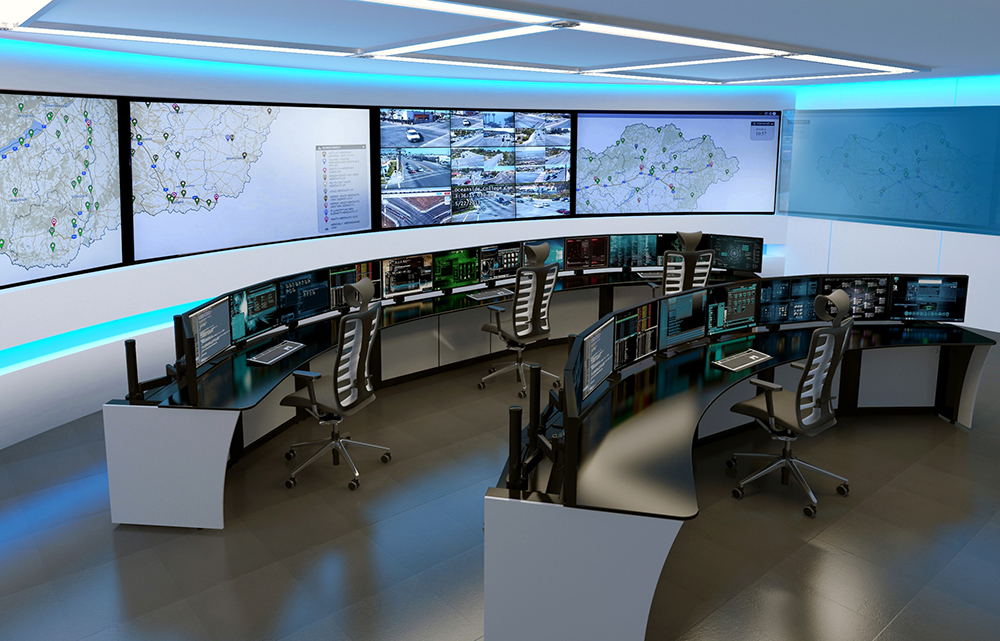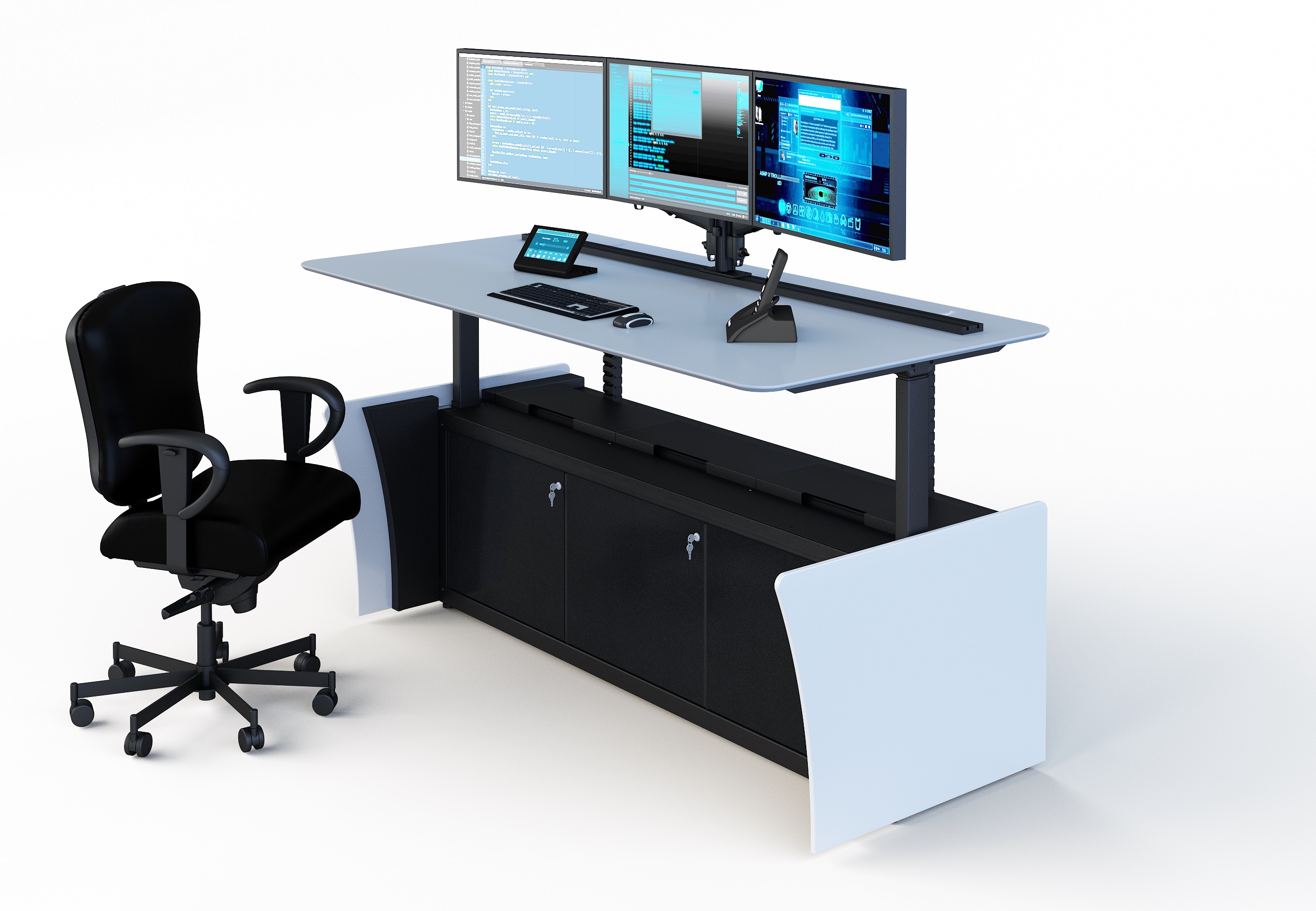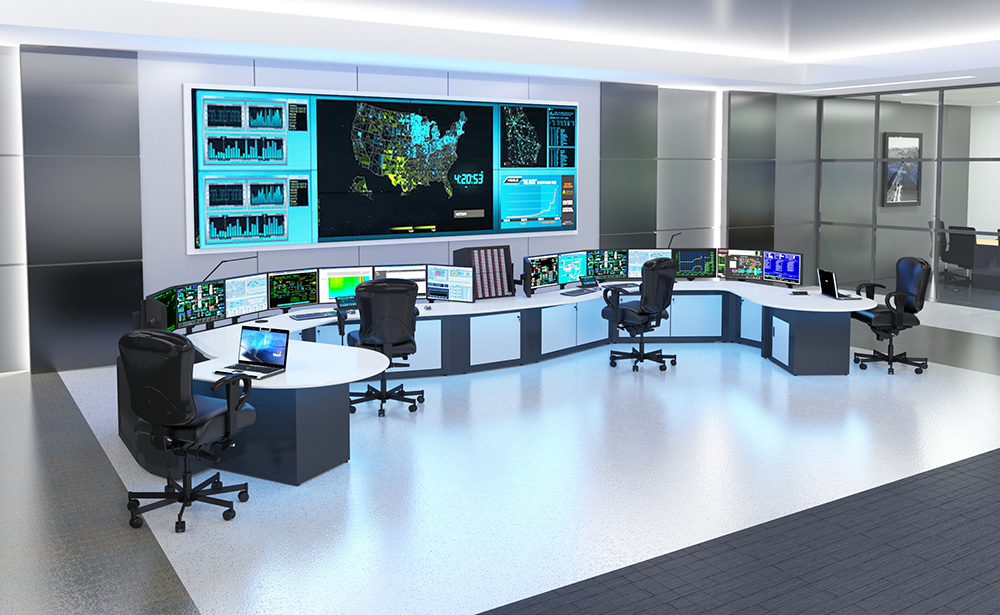
If you’re in the business of transportation monitoring or traffic management centres, your control room is likely the nerve centre of your operation. A well-built control room is an extension of the operator, providing optimal support through purposeful design and advanced technology.
Whether you’re monitoring traffic patterns, viewing traffic control camera coverage or observing traffic pattern maps, your control room furniture plays a big role in minimising distractions and maximising focus.
“Comfort, durability, ergonomics, technical features—these are all important considerations that need to be assessed when selecting transportation control room furniture,” said Tracy Crocker, CEO of Winsted. “Engineering an effective control room takes knowhow and support.”
Office furniture v tech furniture
When building a control room, it’s important to understand the difference between technical furniture and run-of-the-mill office furniture. In comparing the two, you’ll find they only have one thing in common — providing a place to set your equipment. Other than that, they couldn’t be more different.
Quality, durability, cable management, easy access, and ergonomics are key differentiators between average office desks and true technical furniture.
• Quality and Durability: If you’re investing in furniture for a transportation control room, you should consider consoles and chairs that are made with longevity as a key feature.
Typical office furniture is used 2,080 hours a year, whereas control room furniture is used 8,760 hours a year.
Technical furniture is built for durability and is typically found in intensive, operational environments, such as emergency dispatch centres and control rooms, which utilise the workstations 24/7, 365 days a year. This type of furniture must be up to the task; the quality of its materials, surfaces, hardware components and even accessories must perform at a level that exceeds the expectations of a typical work environment.
Traditional office furniture is typically built with lower-cost materials and is designed to be used in either work or home settings. Most office furniture is made with materials that aren’t meant to withstand a continuous-use work environment. In most instances, they consist of frames and work surfaces that are constructed from wood composites, which means they are not built for heavy use. Technical furniture frames, on the other hand, are made from high-grade steel, and the work surfaces are crafted of highly durable materials that can withstand continuous use.
When regular office furniture is exposed to atypical use, such as in 24/7 operations, you can expect premature wear and tear, resulting in additional costs.
• Cable management: Traditional office furniture typically only has keyboards, a mouse and monitor cables to house and manage. On the other hand, a continuous workspace has very large cable challenges.
Technical furniture is best suited for housing and managing large quantities of computer, audiovisual, communications or medical equipment and the associated peripherals. Office furniture, on the other hand, is designed to hold a computer, a monitor (or maybe two), a communication device and files. Unlike traditional office furniture, technical furniture is equipped with advanced cable management systems. This helps reduce clutter in your control room and makes it easier to access and move equipment.
• Easy access: With so much technology and peripherals being packaged into technical furniture it’s imperative that there is easy access to cables, plugs, CPUs, monitors that are essential to running the business. This is often overlooked and without easy access valuable time can be lost trying to add a new piece of technology. This easy access must be intuitive and flexible to adapt to new technology, all measured in seconds not minutes or hours.
• Ergonomics: Arguably the most significant difference between office furniture and technical furniture is ergonomics. Traditional office furniture is designed to support users during a typical eight-hour workday. Technical furniture, on the other hand, is built specifically for 24/7 environments and is engineered to support operators in industries where focus and productivity are critical. Proper ergonomics leads to superior situational awareness, allowing operators to keep their mind in the game with fewer distractions.
Technical furniture is designed and manufactured with strict adherence to human factors and ergonomics, especially given the nature of critical operational environments.
Why situational awareness is key
Situational awareness is an important factor in how well a transportation control room operator can complete their job.
Situational awareness refers to the knowledge and environmental understanding that allows operators to make correct decisions in complex situations. Good situational awareness means operators understand what’s going on around them, along with the impact of their actions. They can gather information effectively, assess abnormal situations and quickly take corrective action if needed.
“Situational awareness is important to the overall success of a transportation control room,” states Crocker. “Operators with poor situational awareness are more likely to make potentially disastrous mistakes.”
An ill-equipped or distracted operator who makes the wrong decision at a critical time can cause harm to co-workers, the surrounding community or the environment.

Situational awareness is impacted by many factors including lighting, sound and ergonomics. However, situational awareness supported by ergonomics starts and stops at the operator’s console and chair.
Founded in 1963, Winsted has been a constant leader in console and workstation product design and development. Winsted’s team of experts has combined disciplines of industrial design, ergonomics and interior design—giving the company the capability to create control room solutions that are both efficient and eye-catching.
Control room consoles and chairs operate less as traditional office furniture and more as critical pieces of equipment that contribute to the success of your operation, employee health and satisfaction.
Well-built technical furniture typically offers the option of height-adjustable work surfaces, personal environmental systems, multi-user accommodations, personal storage and other elements that contribute to user comforts.
There is a direct correlation between operator comfort and strong situational awareness. A furniture system developed with intelligent ergonomics can become an extension of an operator’s body and mind and can clear a path to productivity.
“With ergonomically mindful furniture, users can easily access the tools they need in their transportation control room,” says Crocker. “Proper ergonomics reduces distractions and increases situational awareness.”
Finding the right console
When building or updating a transportation control room, you must assess room size, number of operators and technical needs (e.g. monitors, table space, etc). You can start this assessment and your design process by using tools such as Winsted’s free WELS software, a user-friendly program that lets control room managers quickly design a solution that meets their needs.
“Winsted consoles are well-suited for traffic management functions and security operations within your transportation infrastructure. Keeping the workspace undistracted and under control allows operators to function at their best and gives them the opportunity to be highly productive,” said Crocker.
Finding the right control room design and technical furniture can be done through Winsted’s 3D process: Discover. Design. Deliver. This allows customers and project management experts to clearly define the control room purpose and operator needs, engineer a space that includes the most appropriate technical furniture, and install per the specifications.
Winsted has recently unveiled two new, easily configurable products: the Vue Workstation has different widths and connecting cabinets for multi-operator solutions; the Sightline Console has two different console depths, with concave and convex corners to create solutions that fit any room size. Both come in static or height-adjustable options, offering multiple work surface options, cable management, and open or closed design.
Winsted plans to unveil a new console to the transportation market in fall 2022: Pinnacle will be equipped with Synergy, and together the console and technology will provide the highest level of operator control and ergonomics of any console on the market.
“Transportation industry professionals require minimised distraction to maximise their focus,” concludes Crocker.
“Winsted’s technical furniture is a system of intelligent ergonomics that creates comfortable mission-critical command centres. And with consoles thoughtfully designed with open sightlines, users are in complete control, giving them the freedom to think, focus and succeed.” ITS
• For more information about technical consoles and the new Vue Workstation and Sightline Console, visit Winsted.com











